Search Results for Tag: Emissions
Deciding Arctic future in Fairbanks and Bonn

Can summits and negotiations halt Arctic melt?. (Pic: I.Quaile, Greenland)
It is hard to tell where the most influential conversations on the future of the Arctic are being held right now. Fairbanks would be the one where “Arctic” features most directly, at the summit of the Arctic Council. But the UN climate talks are also happening here in Bonn at the moment, and what was originally planned to be a fairly technical working meeting on implementing the Paris Agreement has been overshadowed by the question of whether the world’s second-biggest greenhouse gas emitter the USA might leave that Agreement, as threatened by President Trump.
The US climate question-mark
Either way, on both stages, the USA is at the centre of things. The election of Donald Trump and the establishing of an administration set on dismantling environmental protection and climate legislation has increased the size of the question mark hanging over the Paris goal of limiting global temperature rise to the two degrees – or rather 1.5 degrees – experts consider the absolute maximum to avoid dramatic feedback effects and potentially catastrophic climate change. And as far as the Arctic is concerned, even that would be too high. The icy north is already melting rapidly.
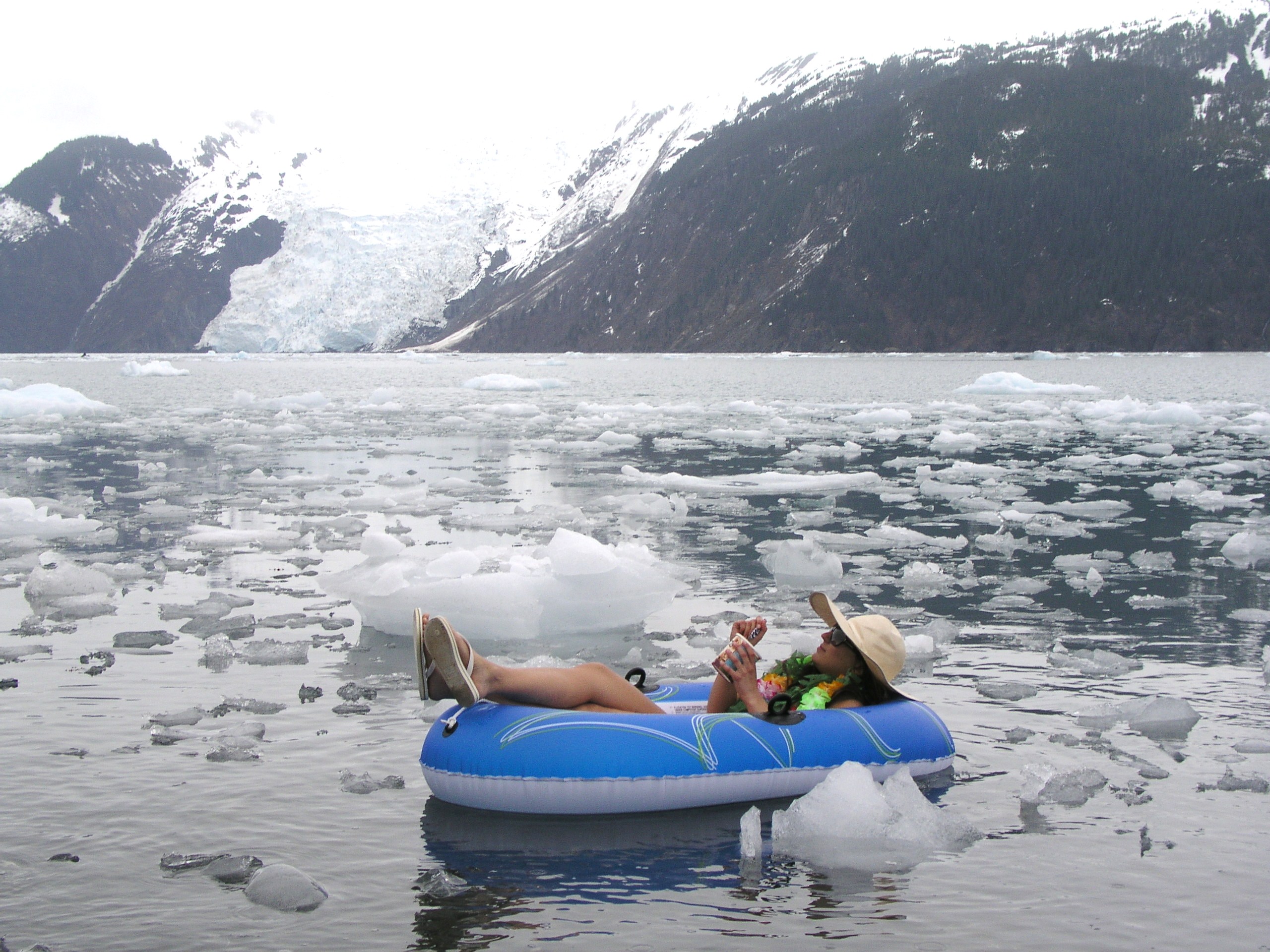
Soon no longer just fiction? (I.Quaile, Alaska)
When the talks started in Bonn on Monday, a preparatory meeting for this year’s climate mega-event, also to be held here this November at the headquarters of the UNFCCC, people were anxiously awaiting a meeting that was still scheduled to take place in the USA on Tuesday, when the President was to make the decision on the Paris Agreement. It has since been postponed. The fact that it has been rescheduled until after the G7 meeting later this month, which will be attended by President Trump, supports the view that there is more to this than just a collision of appointments. Paula Caballero, the Global Director of the Climate Program at the World Resources Institute WRI, is in Bonn for the talks, and she told me in an interview the US Cabinet is divided on this issue and President Trump still has to make up his mind. She is hopeful that good (business) sense will prevail and President Trump will be influenced by those – in his immediate surroundings and on the international stage – who point out it makes sense from all points of view to stay in that Agreement and promote the shift to renewable energies and emissions reductions. Will the G7 meeting convince Trump to stay in the Paris Agreement?
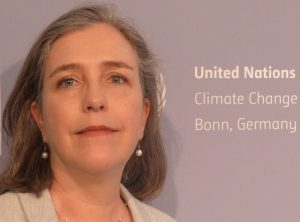
Caballero says it’s in everybody’s interests for the US to stick with Paris. (Pic. I.Quaile, Bonn)
Energy revolution from the bottom up?
You can read that interview, in which Ms Caballero outlines the ins- and outs of the US-Paris Agreement decision and stresses why it is in everybody’s interests for the US to stay in – on the DW website, or listen to it in the latest edition of Living Planet. One thing that is clear is that the momentum of the shift to renewable energies is picking up across the globe, regardless of the attempted rollback in the USA.
On Living Planet I also talk to two women in the programme who are pushing ahead with climate protection at the city level. Laura Kavanaugh and Maryke Van Staden work with ICLEI, a worldwide alliance of “local governments for sustainability”, which held a “Resilient Cities” forum, also here in Bonn, last week. Their message is quite clear. Cities around the globe are already feeling the impact of climate change now. Urgent action is required. The same is true of the Arctic, which is being hit so much harder and faster than the rest of the planet by climate warming.
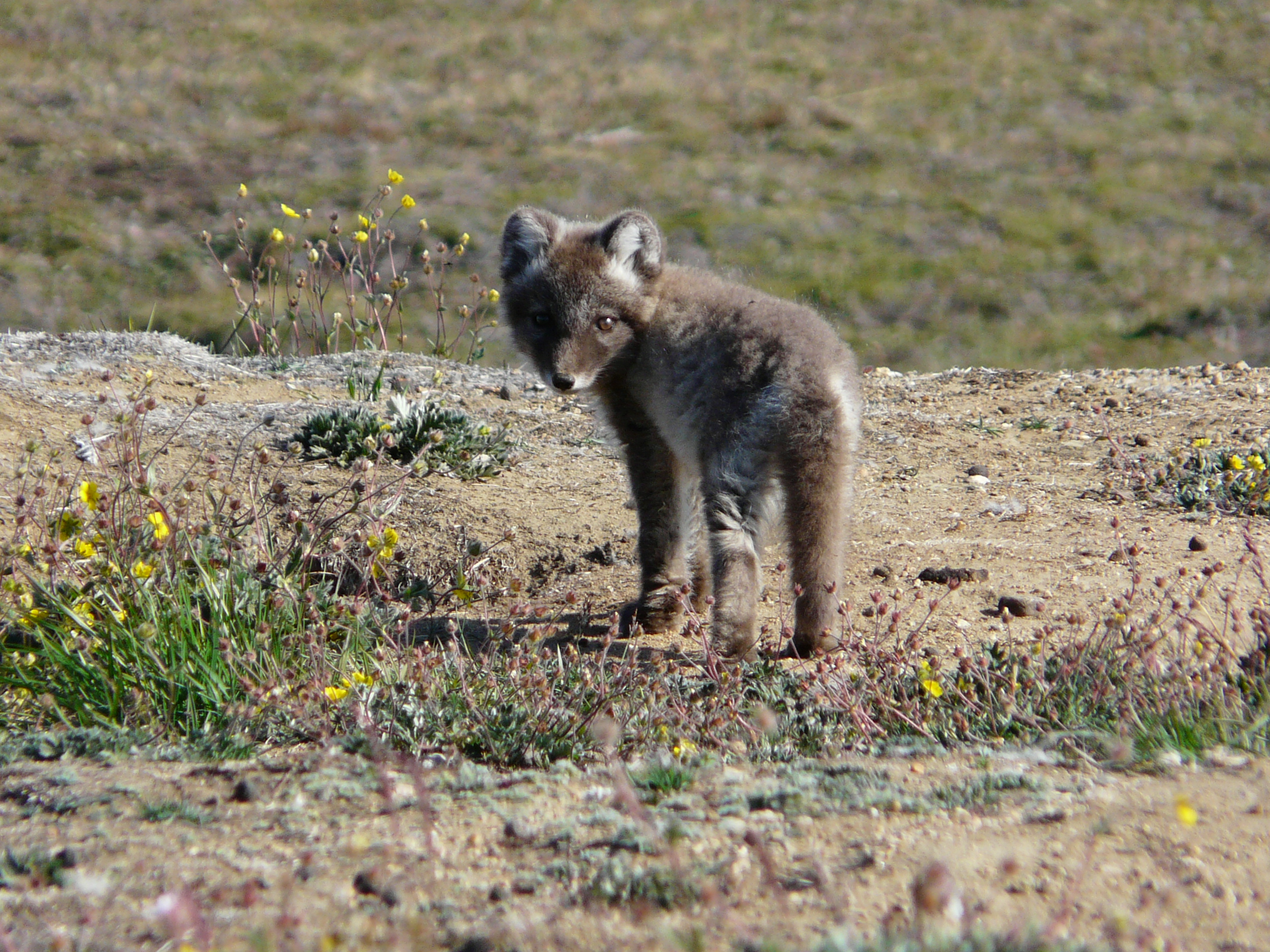
Will the Arctic fox survive in a warming climate? (Pic. I.Quaile, Greenland)
Ulterior motives
Clearly, progress to halt global warming is key to preserving the Arctic ice. That makes it all the more interesting that the Arctic Council summit in Fairbanks is being hosted by none other than the “new” US Secretary of State Rex Tillerson, as the USA has held the rotating Chairmanship of the Council for the last two years. Given that Tillerson is former CEO of the fossil fuels giant EXXON Mobil, there will be a keen interest in anything he says on or off the record, with regard to climate change and the prospect of future oil and gas drilling in the Arctic. Given that he is the first Republican Secretary of State to attend an Arctic Council summit, unsurprisingly there is much speculation about whether this indicates an increased US interest in the Arctic – and with what motives. Joel Plouffe has some interesting insights on that aspect.
The Trump administration is keen to boost Arctic drilling, hoping to benefit from easier access thanks to Arctic warming and decreasing sea ice cover. It is to be feared that this is the main reason for the upsurge in US interest in the region. The same applies to Russia.
The thing is, Lavrov didn't have to be there. The other #Arctic FMs weren't there. Just him, watching Tillerson's 2 min welcoming remarks. ? https://t.co/qeEdLGTWRg
— Heather Exner-Pirot (@ExnerPirot) May 11, 2017
Heather Exner-Poirot notes with interest that Russian foreign minister Sergei Lavrov was the only one of the Arctic foreign ministers to hear Tillerson’s speech at the reception in Fairbanks on Wednesday evening.
Cooperation – on climate science?
Finland will take over the helm of the Arctic organization at the end of today’s meeting. Finland has said it aims to protect the Arctic during its chairmanship by adhering to the Paris Agreement. Good luck Finland. You have an interesting couple of years ahead of you.
The theme of the US Chairmanship has been “One Arctic: Shared Opportunities, Challenges and Responsibilities”. The Council says this was reflected in much of the work completed by its six Working Groups and Task Forces over the last two years.
One key issue in focus is science. The “Agreement on Enhancing International Arctic Scientific Cooperation” is up for approval and signature in Fairbanks.
Since taking office, the Trump administration has taken drastic measures to cut budgets for climate science and environment protection. Not without reason did scientists takes to the streets around the world in protest. So there was a considerable feeling of relief when David Balton, the State Department’s assistant secretary for oceans and international environmental and scientific affairs and chair of the Senior Arctic Officials over the past two years announced on Monday that the US remained commited to Arctic climate change research.
“The US will remain engaged in the work the Arctic Council does on climate change throughout,” he told reporters.
“I am very confident there will be no change in that regard”.
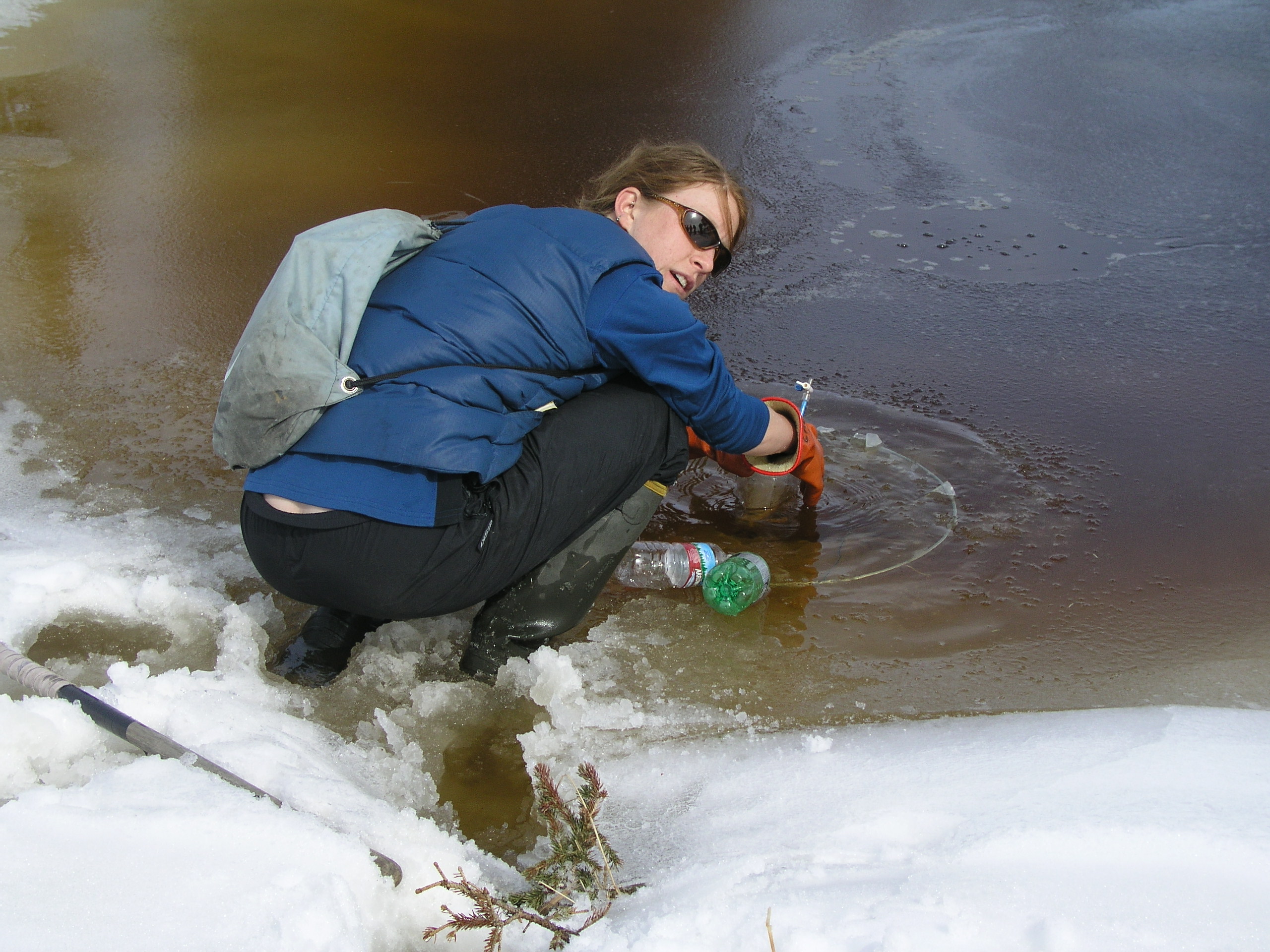
Scientific research is key. Collecting methane from melting lake in Alaska (Pic. I.Quaile)
To drill or not to drill…
It remains to be seen exactly what that will involve. It is hard to understand how Trump’s considering pulling the US out of the Paris Agreement can be reconciled with any commitment to protecting the Arctic from climate warming. It seems more likely that he is keen to benefit from the effects of climate change making the Arctic more accessible for commercial development. After all, scientific research in the Arctic can take many forms.
On April 27, the President signed an executive order aimed at rolling back restrictions on offshore drilling, including offshore Alaska. Barack Obama had issued orders closing off areas of the Arctic and Atlantic oceans to oil and gas drilling.
In the meantime, ten environmental and Alaska Native groups are suing the federal government over Trump’s new order. The groups are led by the League of Conservation Voters, Natural Resources Defense Council and Earthjustice. They say the order exceeded Trump’s authority under federal law.
In ADN, on May 3 Erica Martinson quotes Niel Lawrence, NRDC senior attorney:
“These areas have been permanently protected from the dangers of oil and gas development. President Trump may wish to undo that, and declare our coasts open for business to dirty energy companies, but he simply lacks the authority to do so under the law.”
Icy battle over future energy
While the legal wrangling continues – and the number of lawsuits involving climate change is on the increase – the Arctic continues to warm at a rapid rate.
The “Snow, Water, Ice and Permafrost in the Arctic” (SWIPA) report published in April indicates that the Arctic Ocean could be largely free of sea ice in summer in just two decades, and that projections of global sea level rise are underestimated.
The signs do not bode well for the Arctic. What happens in the region depends very largely on how fast the world is able to halt global warming. With the world’s second-biggest emitter set on exploiting the impacts of global warming in the region and reversing measures to protect environment and climate, the main question is how much influence the USA will actually have, and how resilient the transition to renewable energies will be.
Claudia Kemfert, a leading climate economist, recently published a new book in German about what she sees as the fossil fuels empire “striking back”, a campaign to discredit the green energy revolution. She warns against complacency and underestimating the influence of the fossil fuels lobby.
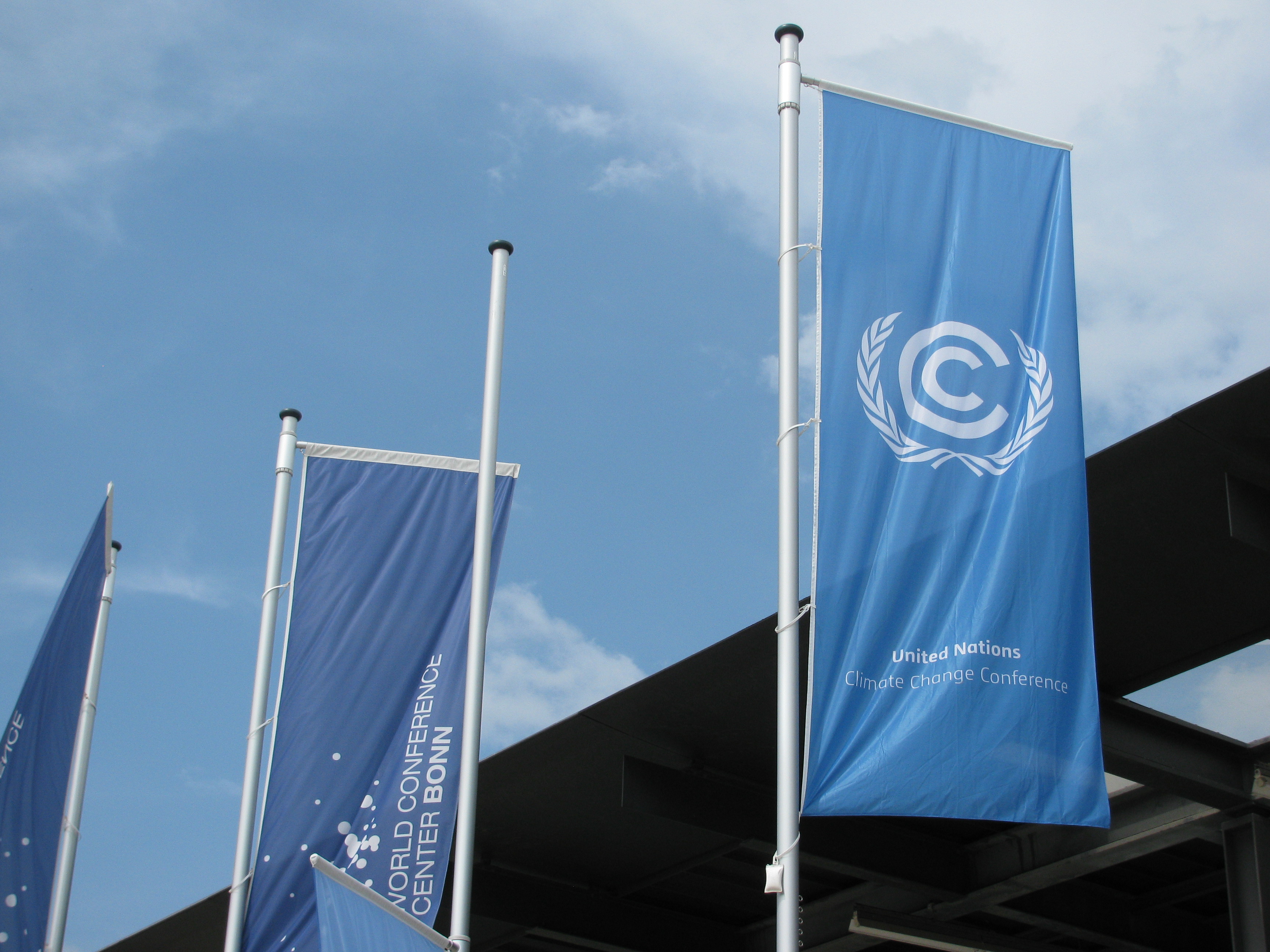
Bonn hosts the UN climate talks now and in November (Pic: I.Quaile)
At the UN talks in Bonn, the influence of those fossil fuel lobbyists on the negotiations has become a key topic of debate.
Government representatives with the common goal of achieving climate protection are not the only ones attending the talks. Alongside the environmental activists on the sidelines, lobbyists from various sectors are also there to promote their own interests. And these include industries which do not stand to profit from restrictions on emissions. All these groups are allowed to attend the international climate conferences hosted by the United Nations Framework Convention on Climate Change (UNFCCC).
Transparency needed
A recently published report from Corporate Accountability International, a United States-based nongovernmental organization, highlighted the strong power of trade and business organizations at climate-related events.
The fossil fuel industry is particularly well represented.
One group cited in the report is the National Mining Association in the US, which, the ngo notes, supports increased coal consumption and contributes to climate change.
The United States Chamber of Commerce is another regular participant. The largest lobbying group in the country – and the largest chamber of commerce in the world – is in favour of nuclear power, offshore oil production and drilling in the Arctic National Wildlife Refuge.
When it comes to the Arctic, the stakes have never been higher, politically, economically and of course environmentally.
Even the implementation of the most ambitious emissions reduction measures will not halt the increasing accessibility of the once virtually unnavigable Arctic Ocean in the near future. That guarantees that this will not be the last Arctic meeting to be attended by top-level politicians from the world’s most powerful nations. Meanwhile, the lobbyists will continue their attempts to prolong the fossil fuels era in spite of all the scientific evidence indicating the dangers it holds for the planet.
Perhaps the most important thing about Tillerson’s attendance in Fairbanks is the attention it draws to what is happening in the high north. And the UN climate process can only benefit from the transparency emerging over exactly who is advocating and influencing what in the negotiations.
Cheap oil from the Arctic? Fake news, says climate economist Kemfert
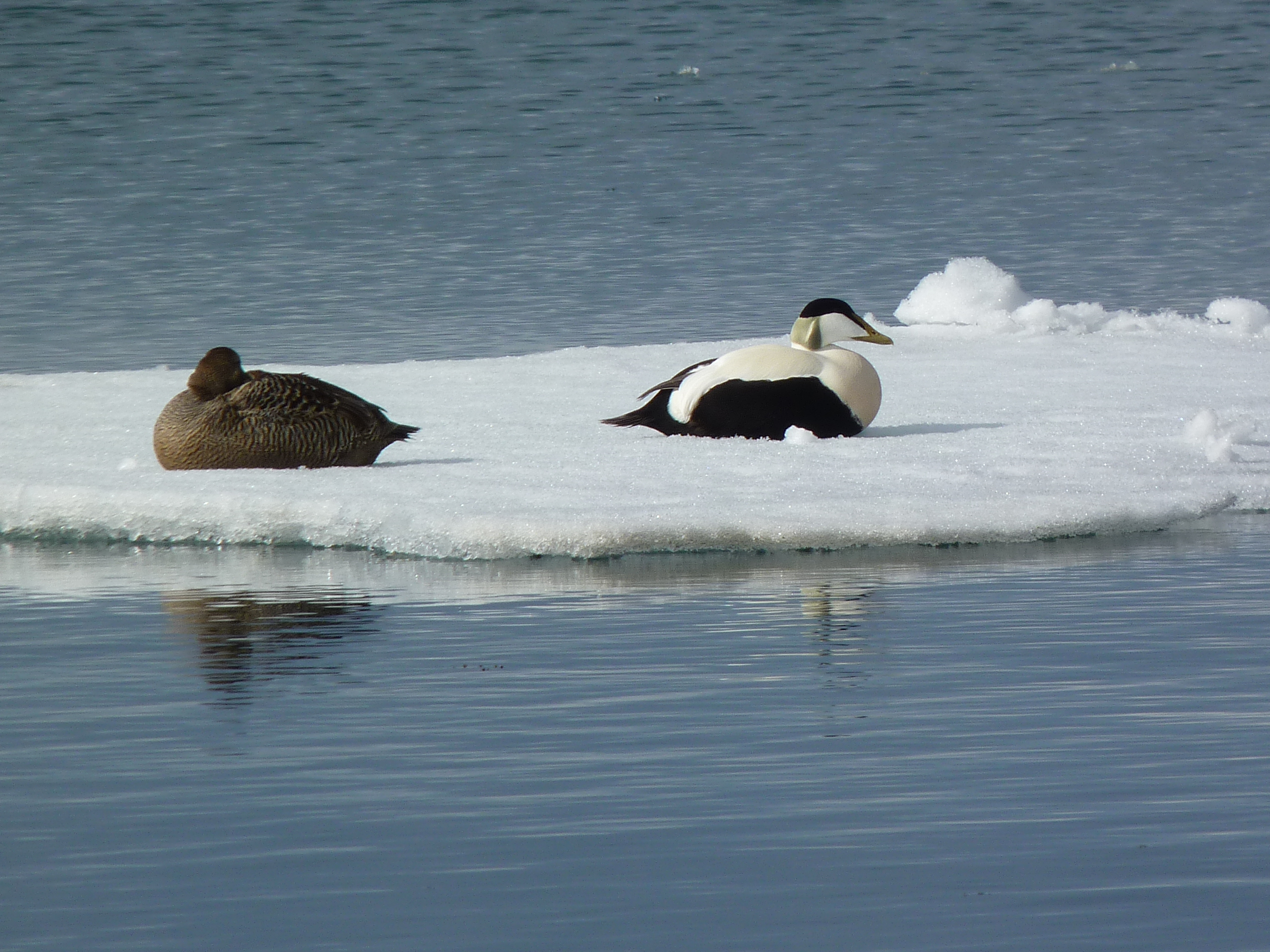
Nothing fake about melting ice. Eiders, off Svalbard (I.Quaile).
This week I came across an interesting publication about to come on to the German market.
“The fossil empire strikes back” (Das fossile Imperium schlägt zurück) is the translation of the catchy title of a new book in German by Professor Claudia Kemfert, head of the department of energy, transportation and environment at the German Institute for Economic Research in Berlin (DIW Berlin,) and professor of energy and sustainability at the Hertie School of Governance, in Berlin.
She has also acted as advisor to the German government, the European Commission and is on the steering committee of the renowned Club of Rome.
A fossil fuels revival: happening now, or alternative facts?
I called her up to record an interview for our Living Planet radio show to find out what was behind the headline, and the sub-title: “why we have to defend the “Energiewende” (energy transition) now.
Prof Kemfert believes the fossil fuels sector is really working hard at making a comeback. That, she says, is not fake news, but the fossils lobby makes use of the latter in its attempt to turn the clock back in terms of energy production.

Kemfert argues for renewables. Copyright: Neuberg, Sebastian Wiegand
While the global transition towards renewable energy has been successful in recent years, with the costs of alternative energies reduced, the Paris Agreement signed and ratified, now, she says, the fossil fuels sector is striking back.
She says they do it by spreading fake news, creating myths about restrictions on cars, speed limits, blackouts, globally, but especially in the USA under the Trump administration. So, she argues, we have to defend the energy transformation. The window of opportunity for climate action is still open, but we are losing time.
The power of fake news
Kemfert’s aim is to debunk the myths, which she is convinced are being used to give renewable energy a bad image. Some of the examples she cited to me are false claims that renewables are more expensive, or that reliance on alternative energies will mean blackouts.
“This has never happened in Germany”, she notes, the country that gave the “Energiewende” its name and pressed ahead with the transition to renewables in recent years.
So how can fake news of this kind make such an impact that Kemfert and other like-minded experts are worried about an oil and coal revival?
“If you repeat this all the time, and repeat it on social media, people think it’s true”, she told me.
“The danger is that they can be successful”.
“The global energy transition is in danger”, she is convinced. “We are losing time to bring greenhouse gases down and help the planet to survive.
“The lobby of the fossil empire is extremely strong… the whole campaign with myths and fake news is really successful, because a lot of people believe what they say”.
So are the fossil fuel lobbyists just better at getting a message across than the other side? There could be something to that, Kemfert agreed. She says the “green lobby” is not aggressive enough. People think “we are the good ones, the energy transition comes by itself”- this is not true. Now it’s time to fight for it”.

We still have a window of opportunity, says Kemfert (Pic. I.Quaile, Alaska)
Time to march?
She calls on all scientists and people who want to protect free and democratic science, to take part in the Marches for Science, planned to take place round the globe on April 22nd.
Of course I wanted to know how she thought the global counter-attack by the “fossil empire” would impact the Arctic.
Yes, she said, this push for a fossil fuels revival could provide additional motivation to those who would like to push ahead with Arctic drilling, as climate change makes for easier and less expensive access:
“There are some aggressive industries, especially coming from the oil and gas sector, who have interest to drill for oil in the Arctic region.
For them, she says, easier access thanks to climate change would be “a nice, so-to-say side effect”.
But for the planet as a whole, climate change is so dangerous that any potential short-time business benefits are just not worth thinking about, says Claudia Kemfert:
“As a climate economist, I cannot say this (oil from the Arctic) makes economic sense, because the costs of climate change are much higher than lower costs, for example, for drilling oil in the Arctic. The costs of global climate change are so high that it cannot outweigh the cost reduction of oil drilling in the Arctic when there’s low ice. We have to move away from oil and gas, this is why it’s more economically efficient to go for an energy transition instead of drilling in areas where we have climate impacts, we are causing environmental difficulties and where we know that burning these fossil fuels will create climate change. That’s really the wrong way to go”.
Kemfert’s book is only being published in German at the moment, but there is more info on her home page, and a longer version of the English interview I conducted with her will be coming up soon on Living Planet and on the DW website.
Finland courts US rivals Russia and China in bid for key role in Arctic power game

China has its own Arctic research station on Svalbard. (Pic. I.Quaile)
Finland does not often make its way onto the international news agenda, but as the country prepares to take over the presidency of the Arctic council from the USA next month, it succeeded twice over the past week. Firstly, the country’s President offered to host a meeting between Russian President Putin and US President Trump. Then Chinese President Xi Jinping flew in on a state visit on his way to a meeting with Trump.
Tackling the summit
At a forum in the northern Russian city of Arkhangelsk last Thursday entitled “The Arctic: Territory of Dialogue”, Finland said it was willing to host a high-level summit meeting during its two-year presidency and would be happy to receive the Russian and US Presidents in Finland.
In his statement, the Finnish leader stressed that “the geopolitical tensions in other parts of the world should not be allowed to spill over to the Arctic. Cool heads are needed to keep the Arctic an area of low tensions also in the future.”
Under the chairmanship slogan “Exploring Common Solutions”, he said “we want to highlight the need for constructive cooperation between all Arctic stakeholders. Also, we believe it is time to take the Arctic cooperation to a new level. Finland proposes the convening of an Arctic Summit to discuss a wide range of issues pertaining to the region and beyond. This would provide an opportunity to ensure that the Arctic indeed remains a territory of dialogue”.
Heather Exner-Pirot, Managing Editor of the Arctic Yearbook, was scathing about the Finnish move in a blog post for Eye on the Arctic. She says Finland has been floating the idea of such a summit at least since 2010.
“But after meeting with Barack Obama in May 2016, Niniistö seemed to abandon such plans, calling the timing “inappropriate” given the international political situation. That was short-lived. Niniistö once again revived the idea in his first telephone call with now President Trump, in December 2016.”

Go for the summit or work from base camp? (Greenland, Pic. I.Quaile)
Stick to base camp?
Exner-Pirot finds it “bewildering” that the current situation could be considered more appropriate than they were a year ago.
“Niniistö may not have noticed, but the Trump Presidency is in crisis, a political dumpster fire, not least because it is under investigation for inappropriate ties to Russia during its 2016 Presidential campaign. Any meeting of Trump and Putin under the current political climate would be a circus.”
She says Finland has not put forward any convincing reasons to host such a Summit, and that the usual biannual Arctic Council Ministerial, which will take place next month, is an adequate regular platform to address high level Arctic issues amongst the Arctic states’ Foreign Ministers.
“The Trump Administration has proffered no position on Arctic affairs except, tangentially, to cast doubt on the anthropogenic contributions to climate change; it is hard to imagine more sophisticated or constructive discussions arising from an Arctic Summit.”
She argues for continuing “compartmentalization” as a guiding principle in regional Arctic politics, keeping environmental issues and development “insulated from the destabilising fluctuations that occur within the broader international system.”
Cooperation with Russia is “rational and necessary”, Exner-Pirot concludes, but “inviting Trump and Putin together for an Arctic Summit flagrantly violates this strategy. Instead, it invites drama and uncertainty into Arctic politics at a time when multilateral efforts are progressing quite smoothly; an all-risk-and-no-reward scenario. This is not the Arctic way. Cooperation with Russia in the Arctic must continue. But the proposal for an Arctic Summit should be shelved.”

Easier access necessitates close cooperation to cope with more traffic in the High North (I.Quaile)
Nice try?
While there is much to be said for tackling issues at lower levels – can you blame Finland for making the most of its central role at the helm of the Arctic Council? It is surely natural for a country in this position to offer a stage for a high-profile meeting of these two world leaders – perhaps especially when it seems unlikely in the present circumstances.
At any rate, it will only happen if the two key players feel it could be to their advantage. The very prospect certainly ensured considerable news and public attention for the incomimg Arctic Council Presidency.
Finnish President Sauli Niinisto back-pedaled a little later, saying the nation was unlikely to hold an Arctic summit at short notice, cooling media excitement at the prospect of an early meeting between US President Trump and Putin.
For his part, President Putin said he was willing to meet Trump in Finland, but “he would wait longer if needed”, the news agency AP reported: “We are waiting for the situation to normalize and become more stable. And we aren’t interfering in any way.”
With a US congressional investigation of possible links between the Trump election campaign and Russia underway, the jury, presumably, can said to be “still out” on that one.
Ultimately, insulating the Arctic from the tensions of international politics as Exner-Pirot suggests, seems like wishful thinking.
There is evidence enough that Russia has been moving to increase its military presence in the region. In a feature for Reuters published January 30th, Andrew Osborn wrote Russia was “again on the march in the Arctic and building new nuclear icebreakers.”
Osborn describes this as “part of a push to firm Moscow’s hand in the High North as it vies for dominance with traditional rivals Canada, the United States and Norway as well as newcomer China.”

The Chinese lion is claiming its space in the Arctic. (Svalbard, Pic. I.Quaile)
Based on interviews with officials and military analysts and reviews of government documents, Osborn concludes that Russia’s build-up is the biggest since the fall of the Soviet Union and that it will “in some areas, give Moscow more military capabilities than the Soviet Union once had.”
He continues “under President Vladimir Putin, Moscow is rushing to re-open abandoned soviet military, air and radar bases on remote Arctic islands and to build new ones, as it pushes ahead with a claim to almost half a million square miles of the Arctic.”
The article was written after a tour of the Lenin, a Russian icebreaker now functioning as a museum in Murmansk. This week that name popped up again in a story in the Barents Observer by Thomas Nilsen entitled “FSB fears terror at nuclear installations in Murmansk region”.
The topic was on the agenda at a conference on board that same museum icebreaker in Murmansk the day after the metro attack in St. Petersburg.
The conference was entitled “Improving antiterrorist protection of civilian and military nuclear power facilities, preventing acts of nuclear terrorism”.
Nilsen points out that there are few places in the world with more operational nuclear reactors than the Murmansk region.
So is there a link between the Arctic and possible terrorist attacks by “Islamic State”, suspected by Moscow of being behind the St. Petersburg attacks?
Nilsen quotes Oleg Gerasin, head of the Russian intelligence bureau FSB in Murmansk region, explaining that ships from Russia’s Northern Fleet have been taking part in “antiterrorist operations in Syria.”
This demonstrates once more the inter-connectedness of the world today. With all due respect for essential multilateral cooperation on a wide range of issues at lower levels, across the board, ultimately the nature of politics in a globalized world can necessitate participation at the highest leadership level and lend symbolic significance to top-level summits. And that can apply especially if they can be brought about in times of strained relations and global risks.

The view from above can be useful (Greenland, Pic. I.Quaile)
Chinese ties
This week also saw Chinese leader Xi Jinping pay a visit to Helsinki, on the way to his tensely awaited meeting with US President Trump. This was only the second ever visit to Finland by a Chinese leader, although Xi himself visited in 2010 when he was vice-president. Niinistö made an official visit to China in 2013 .
Finland opened political ties with China in 1950 and Chinese state media were keen to stress that Finland was the first western country to sign a governmental bilateral trade agreement with Beijing.
Xi said in a statement there was “great potential” for future bilateral trade ties. He stressed that “over the past 67 years of diplomatic ties, the China-Finland relationship has enjoyed steady and sound growth despite the changing international landscape”. China is Finland’s fifth largest trading partner and Xi said he saw “great space and potential for further economic cooperation and trade”.
During the visit, Finland became the latest to benefit from what the news agency AFT describes as “Beijings famed panda diplomacy”. A pair of giant pandas will be leased to Ahtari zoo in central Finland, where a new panda cage costing more than eight million euros is being constructed.
So while President Trump warned talks with Xi would be “very difficult” – the US deficit with China rose to 31.7 billion $US in February – Finland was stepping up its game, cultivating non-Arctic nation China. China has observer status at the Arctic Council and a strong economic interest in making use of shorter sea routes from Asia to Europe and the USA through the Arctic, with climate change making access easier, although relatively high transit costs and unpredictable ice cover still limit its attractiveness. Beijing is keen to gain footholds in a region it sees as key for the future.

The Russian Peter 1 was the first sailing boat to cross the North Pole unaided in 2010 http://www.rusarc.ru/
China is starting to build its own icebreakers. New icebreakers could allow year-round navigation in the 2020s, Grigory Stratiy, deputy governor of Murmansk Region told Reuters.
China is leading a “Belt and Road Initiative” (BRI), a $5trillion plan to upgrade infrastructure between Asia and Europe. So far, Russia is the only one of the eight Arctic nation states to be a BRI partner. China, which has partnered heavily with Iceland in recent years, is keen to get the Nordic nations on board.
In the statement issued after the visit, China and Finland stressed two key over-arching issues:
“Both sides are committed to working together to reduce or limit greenhouse gas emissions, promote sustainable development and strengthen climate change adaptation and mitigation efforts.”
The two partners “shared the view that economic activities in the Arctic area should take into full consideration the protection and sustainable use of its natural resources. The two countries will intensify economic and technological cooperation in the fields of arctic marine industry, arctic geology, marine and polar research (including polar weather and sea ice monitoring and forecast), environmental protection technology, shipping and maritime safety, including vessel monitoring and reporting, ICT and tourism.”
A wide-ranging and ambitious spectrum.

Get rid of those emissions (Arctic Tromsö, Pic. I.Quaile)
Meanwhile, on the global climate action stage, China seems set to benefit from the backward-looking policies of the Trump administration, positioning itself as a new world leader. At home pollution, drought and desertification are causing increasing problems for Beijing. To ensure peace and food security and avert unrest, a switch to renewable energies is essential. Beijing has also recognized their economic potential. At the same time the country can polish up its international image by taking on the role of climate leader while Donald Trump advances to environment and climate public enemy number one.
While it leads the global move to halt climate change, China is positioning itself to exploit the impacts global warming has already had on the Arctic. Given the current state of the global climate and the slow progress towards keeping to the two-degree let alone 1.5 degree upper limit for global warming, the Arctic is unlikely to re-freeze in the near future. Full speed ahead for Arctic development?
The Arctic Council has to be the body that controls what is happening in the High North and coordinates protection of the fragile Arctic environment.
As President of the body for the next two years, Finland has the opportunity – and the responsibility – to make its influence felt.
As far as the first meeting between the Russian and US-American “big men” is concerned, Finland just might have to pass. Finnish leader Niinistö had to admit to a news conference:
“The G20 meeting in Germany will likely be the first meeting for presidents Trump and Putin”, (July 7 and 8.)
Watch this space.
Arctic sea ice: is the minimum maximum the new normal?
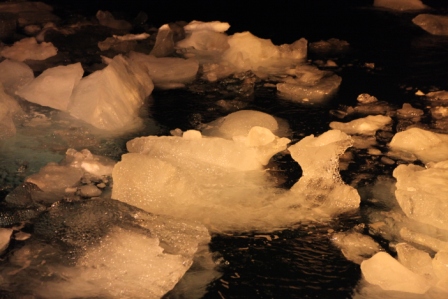
Even the winter sea ice is waning (Off Svalbard, pic. I.Quaile)
If you blinked, you might have missed it. The confirmation came this week that the Arctic sea ice reached yet another all-time low this past winter. It came and went, without too much ado.
Maybe the excitement was just past. The maximum extent was actually reached on March 7th, but of course you can only be sure it is really not going to spread any further once it has definitely been retreating for some time with the onset of spring.
I was waiting for the NSIDC confirmation, but not with any doubt in my mind that it would tell us officially the maximum for this season would be a minimum.
The danger is a “so what?” kind of reaction, or resignation, with the feeling that nothing short of some kind of unprecedented experimental geo-engineering could save the Arctic summer sea ice in the coming years, as the world continues to warm.
Lowest on record
The National Snow and Ice Data Center (NSIDC), part of the Cooperative Institute for Research in Environmental Sciences at the University of Colorado Boulder, and NASA confirmed this week that Arctic sea ice was at a record low maximum extent for the third straight year.
It reached the maximum on March 7, at 14.42 million square kilometers (5.57 milion square miles). Since then, it has started its annual decline with the start of the melt season. Some time in September it will reach its minimum.

Sea ice going, going, gone? (Photo: I Quaile, off Svalbard)
This year’s maximum is the lowest in the 38-year satellite record. NSIDC scientists said a very warm autumn and winter had contributed to the record low maximum. Air temperatures were 2.5 degrees Celsius (4.5 degrees Fahrenheit) above average over the Arctic Ocean. Against the background of overall warmth came a series of “extreme winter heat waves over the Arctic Ocean, continuing the pattern also seen in the winter of 2015”, NISDC said in a statement.
The air over the Chukchi Sea northwest of Alaska and the Barents Sea north of Scandinavia was even warmer, averaging around 9 degrees Fahrenheit (five degrees C) above the norm.
NSIDC director Mark Serreze said in his statement: “I have been looking at Arctic weather patterns for 35 years and have never seen anything close to what we’ve experienced these past two winters.”
The winter ice cover was also slightly thinner than that of the past four years, according to data from the European Space Agency’s CryoSat-2 satellite. Data from the University of Washington’s Pan-Arctic Ice Ocean Modeling and Assimiliation System also showed that the ice volume was unusually low for this time of year.
Record summer melt ahead?
“Thin ice and beset by warm weather – not a good way to begin the melt season,”, said NSIDC lead scientist Ted Scambos.
A low maximum does not necessarily mean the minimum to be measured in September will also be a record low, as it depends on summer weather patterns. But Julienne Stroeve from NSIDC and professor of polar observation and modeling at the University College London said “Such thin ice going into the melt season sets us up for the possibility of record low sea ice conditions this September”.
“While the Arctic maximum is not as important as the seasonal minimum, the long-term decline is a clear indicator of climate change”, said Walt Meier, a scientist at the NASA Goddard Space Flight Center Cryospheric Sciences Laboratory and an affiliate scientist at NSIDC. Iceblog readers might wonder if that is stating the obvious, but given the attitudes of the US administration, you can’t take anything for granted.

Data from satellites is key. Reception centre at KSAT in Tromso, Norway, Pic. I Quaile)
The September sea ice measurements began to attract attention in 2005, when the ice extent first shrank to a record low over the period of satellite observations. It broke the record again in 2007 and in 2012. There used to be little interest in the maximum extent of the Arctic sea ice at the end of winter. I can remember reading with concern and writing a piece about the maximum extent also reaching a record low in 2015.
NOAA (climate.gov, “science & information for a climate-smart nation”!) said in its statement:
“Arctic sea ice extents have followed a steady downward trajectory since the start of the 21st century – at the same time global temperatures have reached new record highs. Betides setting multiple record low summertime minimum extents, Arctic sea ice began to exhibit a pattern of poor winter recovery starting around 2004.”
Living on thin ice
I remember an expedition to Alaska in 2008, when locals at Barrow told me about their personal experiences of the sea ice becoming thinner and less dependable. Some years later I heard similar reports from people in Greenland, who were selling their sled dogs and buying boats in preparation for changing from ice to open water fishing. The data backs them up.

Sled dog – out of work? (I.Quaile, Greenland)
Yereth Rosen, writing for Alaska Dispatch News, draws attention to the problems of continuing to collect that data. She quotes NSIDC’s Serreze:
“Just how well the center will be able to track sea ice in the future remains unclear. No new satellite is expected to be in place until 2020, and there are concerns about potential interruptions in the record that goes back to 1979… We’re at a situation where the remaining passive microwave instruments up there are kind of elderly. If we have satellite failures, we could lose that eye in the sky”.
Now there is a worrying thought.
Against the background of budget cuts proposed by the Trump administration, that – to put it mildly – does not regard tracking climate change as a high priority – scientists are understandably worried about the future of scientific research on climate and environment related issues.
Method in the madness?
Without reliable continuous satellite data, it would be much harder to track how climate change is affecting the polar regions, the ocean and our planet in general. This may well be the intention of climate-change deniers behind the scenes. But climate change itself will not go away – and the impacts will be increasingly evident.
Tim Ellis, writing for Alaska Public media, quotes Serreze as saying the polar ice cap will not last long if the region continues to warm at this rate.
“We are on course sometime in the next few decades, maybe even earlier, to have summers in the Arctic where, you go up there at the end of August, say, and there’s no ice at all.”
“The view from space in the fall of around 2040” , he went on – assuming we still have satellites to take the pictures – “will be of a blue Arctic Ocean, aside from some scattered icebergs and clusters of pack ice”.
I don’t know about you, but I find that a rather depressing thought.

My kind of sea ice – frozen Chukchi Sea (Pic: I.Quaile)
Implications for the rest of the globe
Andrea Thompson, for Climate Central, writes “even in the context of the decades of greenhouse gas-driven warming, and subsequent ice loss in the Arctic, this winter’s weather stood out.”
She also reminds us of the global impacts of a warming Arctic and decline in sea ice:
“The Arctic was one of the clear global hotspots that helped drive global temperatures to the second- hottest February on record and the third-hottest January, despite the demise of a global heat-boosting El Nino last summer.”
This week the UN’s World Meteorological Organisation (WMO) said 2016 had been the hottest year ever recorded, and that the record-breaking heat had continued into 2017, sending the world into “truly uncharted territory”.
“The dramatic melting of Arctic ice is already driving extreme weather that affects hundreds of millions of people across North America, Europe and Asia, according to emerging research”, Damian Carrington writes in the Guardian.
On March 15th, Carrington published an article entitled “Airpocalypse smog events linked to global warming”, referring to extreme smog occurrences in China.
Optimism – the only way to go?
This week I interviewed German oceanologist and climatologist Mojib Latif. I wanted to find out whether the highly unusual extreme rainfall and flooding happening in Peru could be explained by natural cycles or was likely to be a climate change impact which could reoccur. You can read the interview here or listen to it on my Living Planet show this week online or on soundcloud.
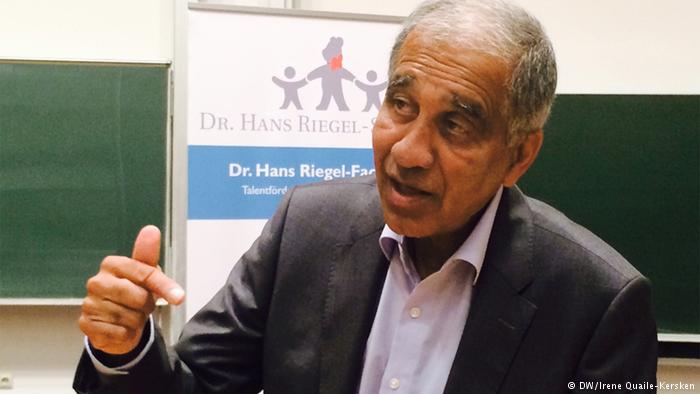
Professor Latif on a visit to Bonn. (Pic. I.Quaile)
The professor stressed that the scientists are baffled, because it is not really the time for an el Nino, although this seems to be a “coastal el Nino”, driven by exceptionally warm water off the coast. Of course he is reluctant to attribute any single event to climate change. He stated unequivocally, though, that the warming of the ocean worldwide was absolutely inexplicable without anthropogenic CO2 emissions, that this is all in line with climate models and that we should all be preparing for an increasing number of increasingly extreme weather events, as the world warms.
He says the governments of the world (apart perhaps from the new US administration) are in no doubt that climate change is happening and they need to halt it. But they have so far failed in their attempts.
When I asked Professor Latif if he still felt optimistic, he told me we really had no other choice. While critical of the lack of government action, he is convinced the world will realize that renewables are ultimately far superior to fossil fuels and will ultimately prevail. The question is whether that will happen in time. As far as the Arctic summer sea ice is concerned, I have to go with a Scots expression: “A hae ma doots”.
Arctic Council: business as usual with USA under Trump?
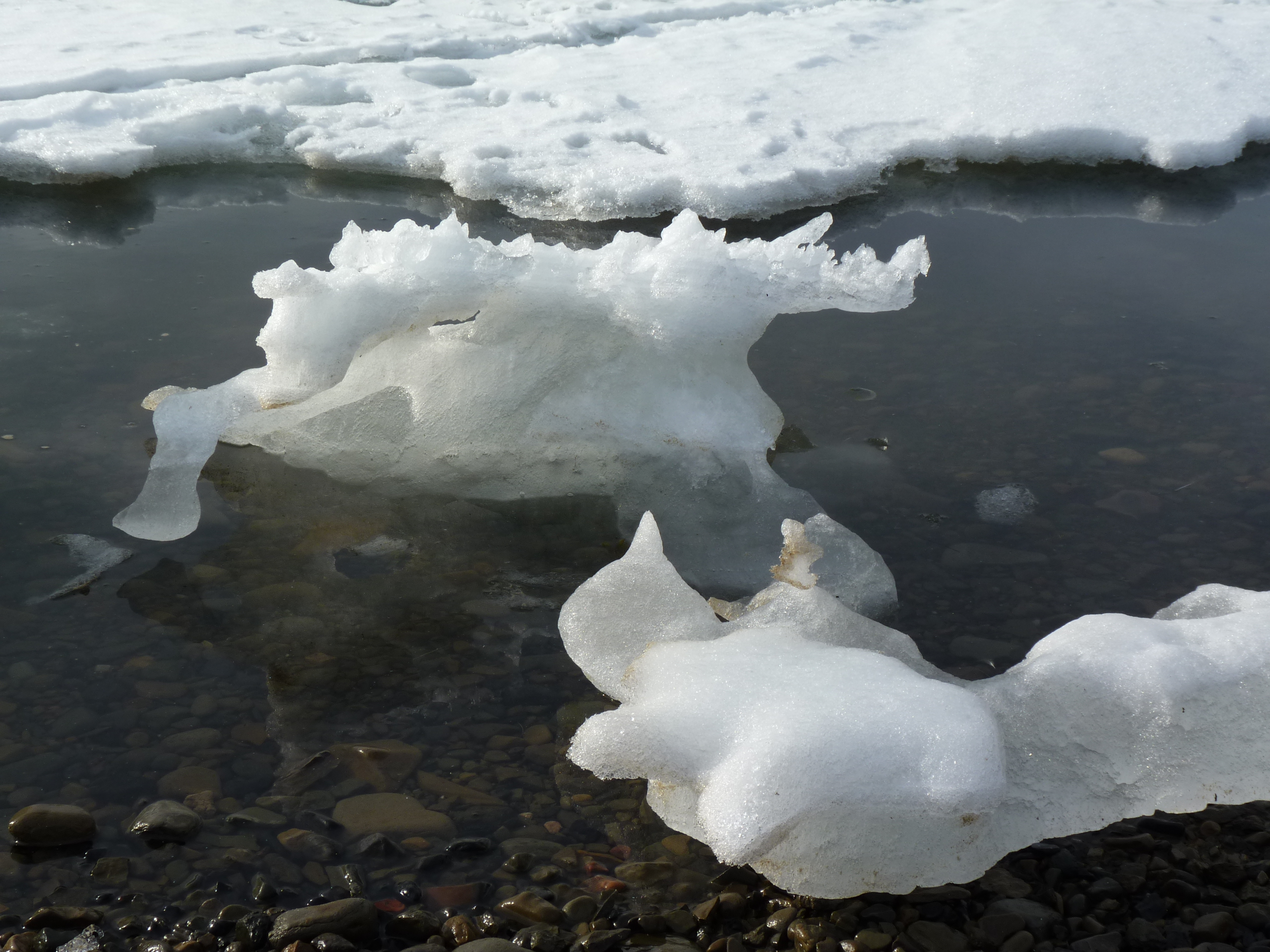
Dwindling sea ice (Pic: I.Quaile)
As the USA comes to the end of its two-year Chairmanship of the Arctic Council, the organization’s “Senior Arctic Officials” met in Juneau, Alaska, last week to prepare for a final ministerial meeting in Fairbanks in May 11th, before Finland takes over the chair. US Ambassador David Balton is currently Chair of the SAO. At a press briefing in Juneau on Friday, it comes as no surprise that one of the questions that interested journalists most was how US Arctic policy might change under the Trump administration and whether that was already happening.
Climate skeptics at the helm?
Given that the Arctic is one of the regions of the globe being affected most rapidly and dramatically by climate change, it does not seem unrealistic to imagine that the climate skeptical views of President Trump and some of his key advisors will have more than just a little impact on the high north.
President Trump’s environment chief Scott Pruitt recently hit the headlines when he again denied that global warming is caused by fossil fuel emissions. The incoming head of the key Environmental Protection Agency (EPA) told the American television channel CNBC he “would not agree” that carbon dioxide from human activity was the primary cause of global warming.
When Pruitt was attorney general in Oklahoma, he helped sue the EPA 14 times. He told CNBC that “tremendous disagreement” remained over human impact on the climate and said the Paris accord amounted to a “bad deal.”
When the foreign ministers of the eight Arctic Council states get together in May, it is US Secretary of State Rex Tillerson, former CEO of the energy giant EXXON, who should be the man in the chair. One of the three priorities of the US chairmanship has been climate change. An interesting combination. So will the ex fossil fuels chief be there?
“We have recommended to Secretary Tillerson that he attend the Arctic Council Ministerial. He is the Chair of the Council. We don’t have a decision yet, as Secretaries of State are busy people. But the last three times the Arctic Council met at the ministerial level, a US secretary of state attended. So it’s my hope that he will come. Certainly the government and people of Alaska would like him to be here.”
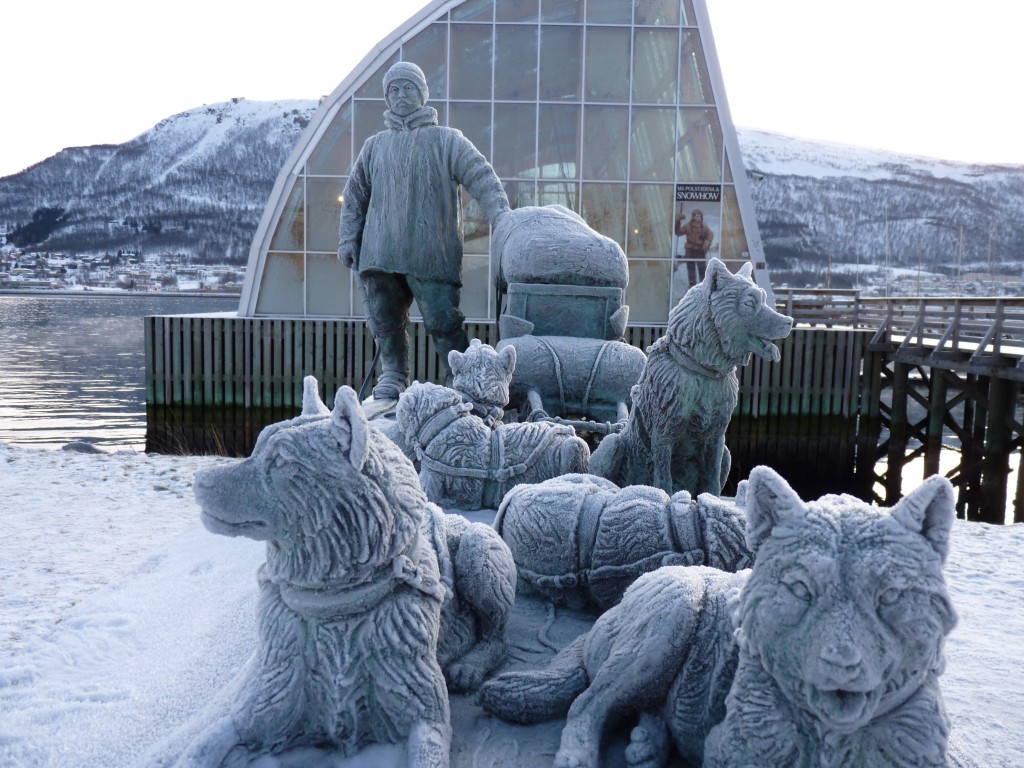
Polar exploration – close to the Arctic Council secretariat in Tromsö, Norway (Pic. I.Quaile)
Continuity or change of direction?
Drastic budget cuts affecting climate and environment and changes in personnel at the State Department and elsewhere in the administration were also on the agenda at the Juneau briefing (which was joined online by journalists around the world). So how is this affecting the work of the Arctic Council?
“So far I see no direct effect on participation in the Arctic Council either in the lead-up to our own ministerial or beyond, but the picture is not entirely clear yet,” said Balton.
“So far”, and “not yet” seem to be key words.
When it comes to whether and if so how US participation in the Arctic Council and US goals and priorities relating to the Council and to the Arctic have changed or may change under the Trump administration, Balton expressed optimism about continuity:
“I have been working on Arctic issues for the US government for the best part of 20 years. And what I can say is that US interests in the Arctic and our goals and objectives for the Arctic have not changed appreciably over time. There was a first statement of US Arctic policy issued during the Presidency of Bill Clinton. It laid out 6 basic goals of our nation in the Arctic. When George W. Bush became our President, they reiterated those very same goals, in the context of another Arctic policy statement that was put out. And when Barack Obama became President there was a question of whether the Bush administration policy would stand. And it did. It was reaffirmed during the Obama administration. And we built on top of the policy something known as the national strategy for the Arctic region. What all these documents have in common is more important than what separates them.”
Balton did accept that there had been changes of emphasis, but not in the fundamental view.
“The real interests of the United States in the Arctic have very much to do with the state of Alaska and its needs and interests, and keeping the Arctic a peaceful stable place is certainly a non-partisan issue in the United States.”

Frozen waves at Barrow, Alaska. (Pic: I.Quaile)
America first in the Arctic?
Presumably, as long as this fits with President Trump’s “America first” policy, all will be well. The question is how that plays out when other major Arctic players put the interests of their own countries first.
“One Arctic” was the overall theme of the US Chairmanship over the last two years. But when it comes to reconciling the geopolitical not to mention economic interests of Arctic states, cooperation might just become a little more tricky.
In September 2016, the International Security Advisory Board (ISAB), a Federal Advisory Committee established to provide the Department of State with a “continuing source of independent insight, advice, and innovation on scientific, military, diplomatic, political, and public diplomacy aspects of arms control, disarmament, international security, and nonproliferation” published a “Report on Arctic Policy” in response to a request to “undertake a study of Russia’s interests, intentions, and capabilities as it has been increasing its presence – both military and civilian – in the Arctic.”
Interesting times ahead.
The wind of change?
So far, the new administration has not turned its attention to the Arctic in particular, Balton told the journalists:
“There have been signals about climate change policy, but even those are not – at least not to me – clear yet. We do know that the Finns intend to highlight the Paris Agreement as part of their chairmanship program, but they have many other aspects they hope to highlight as well, including the sustainable development goals that the United Nations has announced.”
It remains to be seen whether the Trump administration will keep to the Paris Agreement or not. And when it comes to sustainable development in the Arctic, clearly changes in the climate will play a key role.
Between now and the end of the US Chairmanship of the Arctic Council in May, it looks as if Balton and his team will be able to carry on with “business as usual”.
“So the US Arctic Council Programme was developed in the last administration, and is just coming to fruition now. Of course we are in touch with the new administration, which I’m a member of, and for the most part now our guidance is to keep doing what we’re doing. That could change between now and May, but I don’t actually expect it will.”
The question will be what happens after that.
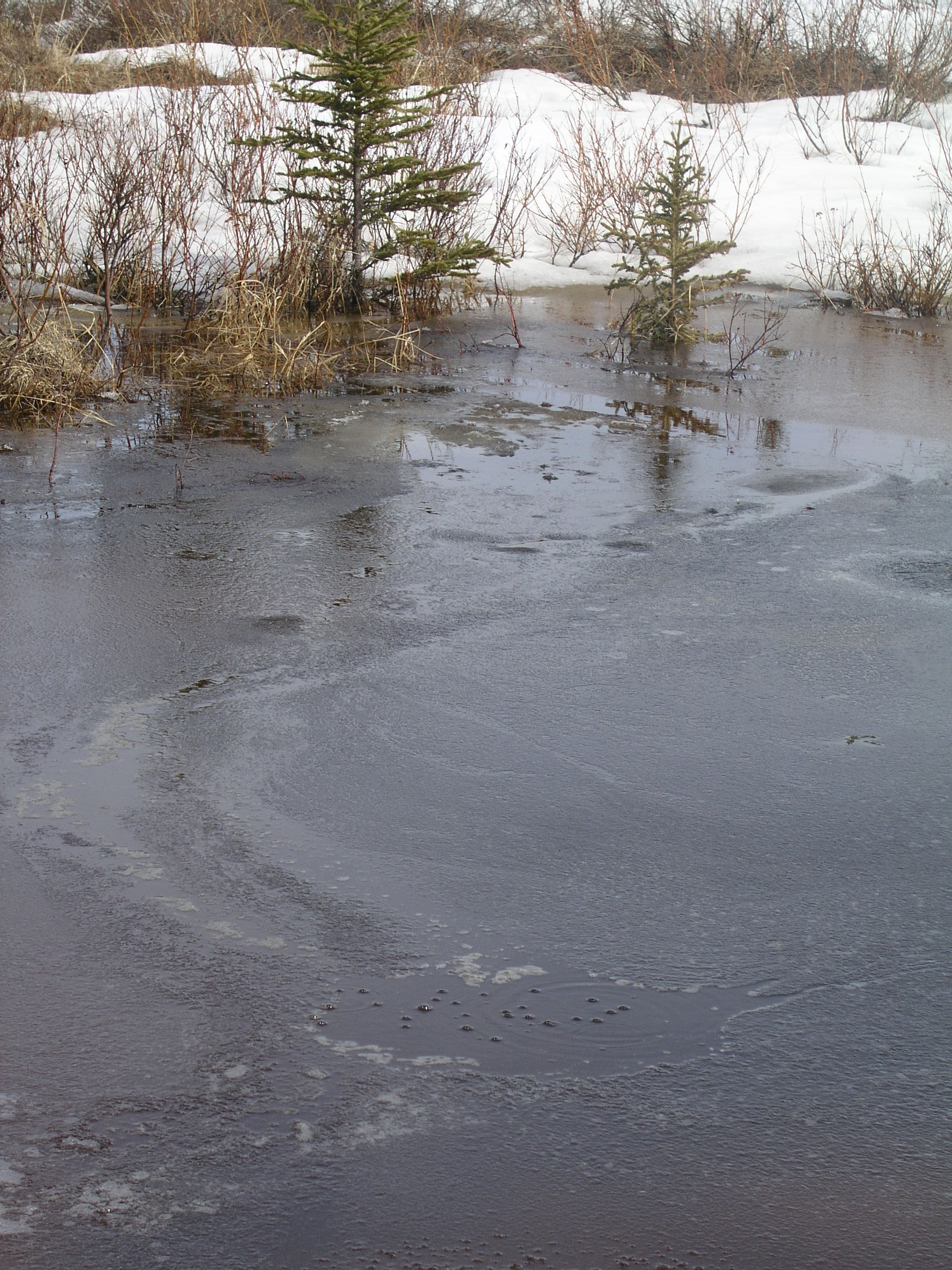
Methane bubbles escape from melting permafrost lake in Alaska (Pic. I.Quaile)
Long-term strategy
The Arctic Council has committed to developing a long-term strategic plan. “One of the things I felt strongly about when the US took over was that we needed to get the Council as a whole to be thinking in more than two-year increments”, Balton said. “Many of the issues concerning the Arctic are longer term. And the Council must find a way to think in longer-term. So that will happen. I expect two years from now we will be finalizing the long-term strategic plan for delivery to ministers in 2019, and probably look ahead at least ten years. “
So what effect will the change of US administration have on that? Some of the journalists listening to the briefing seemed skeptical about the idea that nothing appears to have changed, although the new new administration has hugely different policies. Again, this could well be just a matter of time:
“I think it’s fair to say that there has been no fundamental change in the way that the US is participating in the AC yet. This administration like past administrations may wish to put its own stamp on US Arctic policy. That may occur at some point. But it has not happened yet.”
Monitoring a rapidly changing Arctic
In response to a question about ocean acidification, the US ambassador described the increase in ocean acidification by 30% worldwide as “staggering” and said it was quite clearly caused by CO2 emissions.
There are not enough platforms in the Arctic to monitor this fully, he said, describing it as “one of our ambitions” to change that.
That brings us back to the crucial role played by US bodies, especially the National Oceanic and Atmospheric Administration (NOAA) and the National Aeronautics and Space Administration (NASA) in monitoring the planet.
Today, more than thirty leading Florida scientists published an open letter to President Trump, coming out strongly against White House’s proposed cuts to the earth sciences programs at NASA and NOAA. They call on the President to recognize climate change and resulting sea level rise, which is, of course, of existential importance to Florida in particular.
Concern is mounting in the scientific community that the new administration will try to silence efforts to educate the public on climate change.
Christina DeConcini, Director of Government Affairs at the World Resources Institute, whom I interviewed recently about the Trump administration’s climate and environment policies, said in a statement on today’s letter:
“The proposed budget cuts are an affront to the integrity of science and a large body of crucial work on the impacts of climate change that increasingly damage the United States. As the most vulnerable U.S. state to sea level rise, Floridians know this very well; it persistently threatens their infrastructure, communities and homes.
“Research from NOAA and NASA is foundational for assessing and effectively responding to disruptive flooding and costly extreme weather damages.”

Satellite data is revolutionizing our knowledge of ice. (Pic. I.Quaile, Tromso)
Science first
In the letter, the scientists write:
“American scientists have historically been at the forefront of scientific discoveries and innovation. America should invest heavily in our effort to understand our homeplanet and be aware of how physical changes will impact industry and society.”
They make a powerful plea for continuing support for NOAA and NASA:
“NASA and NOAA Earth science programs monitor and understand changes in our water resources and our soil. They track the conditions that affect the food and medicines we get from the oceans. These conditions impact agriculture, our military, businesses, and major industries. It is imperative to support programs that explore our planet – at NOAA and NASA and across the government. The work of NOAA and NASA is vital to life on Earth and must be continued”, the scientists write.
“NASA and NOAA’s work capture the history and the present state of the oceans, land, fresh water bodies, and atmosphere. They make it possible for us to observe changes to the planet we live on, from the vantage point of space.
For example, NASA satellites are responsible for providing the first global measurements of aerosols in our atmosphere and for understanding ozone. NASA satellites from the GRACE and ICES missions discovered unexpected rapid changes in Earth’s great ice sheets (…)”
So there we have it. Ultimately, the work of the Arctic Council cannot be separated from the issue of climate change and scientific monitoring.
Perhaps it was fortunate that the US Presidency of the Arctic Council coincided with the Obama period in office, where some decisions were taken in the interests of the region.
It will be up to Finland to direct operations for the next two years, from May onwards. But, clearly, regardless of what happens in the Arctic Council, the overall policy of the new US administration will have a key impact on what happens in the Arctic.
The latest SWIPA, (Snow, Water, Ice and Permafrost in the Arctic) report on the cryosphere will be presented to the ministerial gathering in May. It is unlikely to make happy reading. Climate change will have to be a major factor. And given the Trump administration’s policies so far on that issue, the work of the Arctic Council will not be able to carry on regardless.












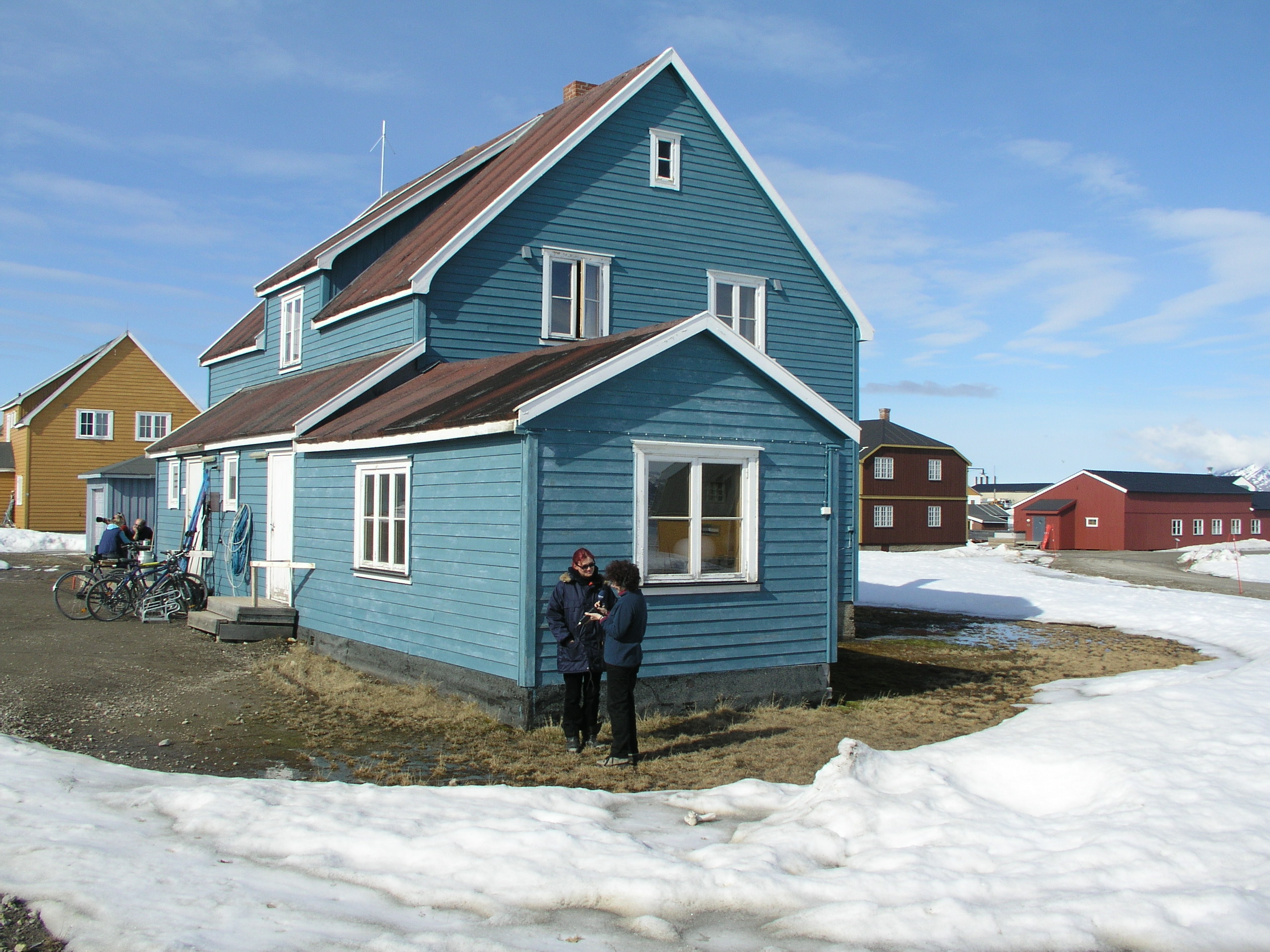

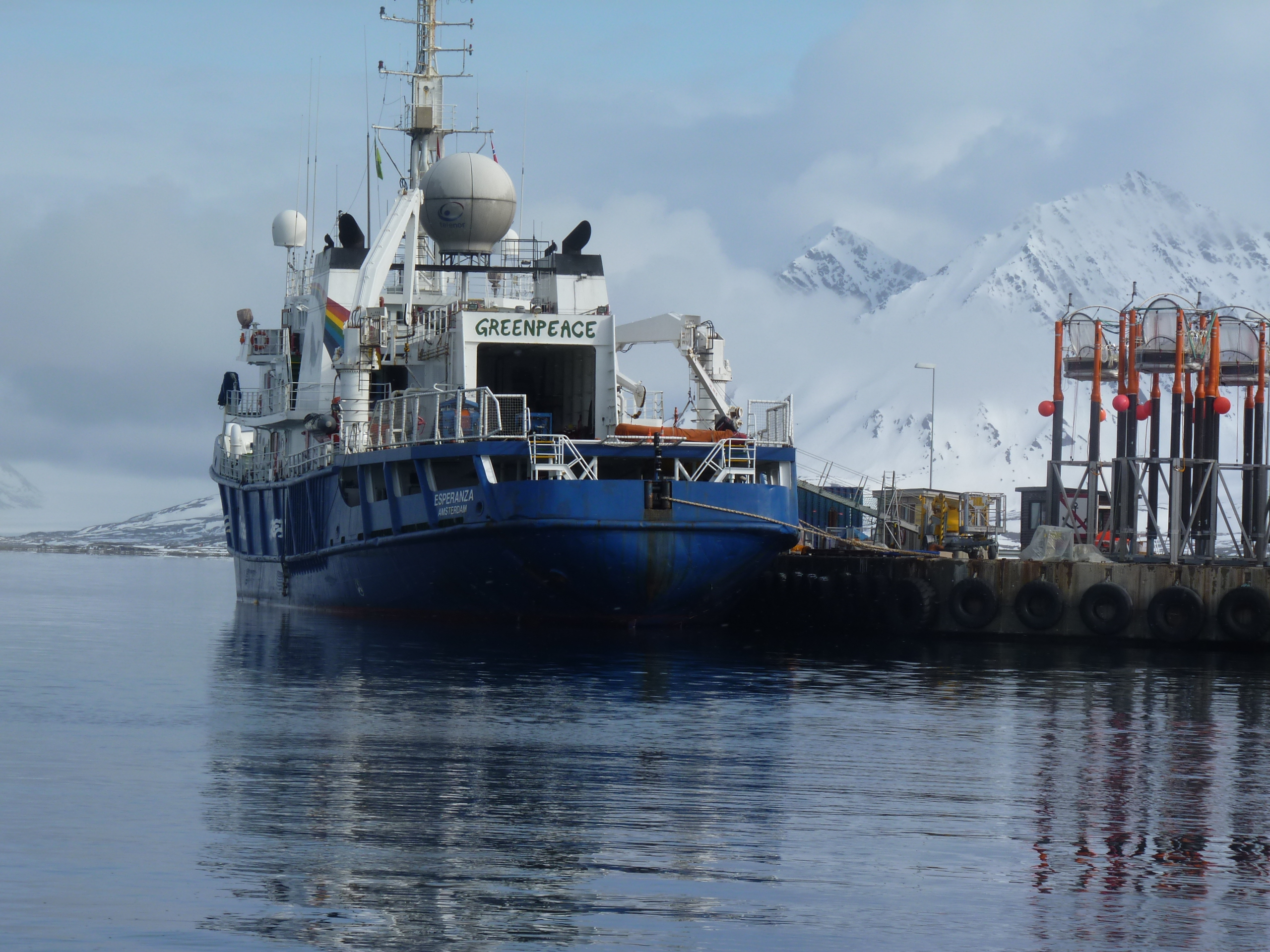
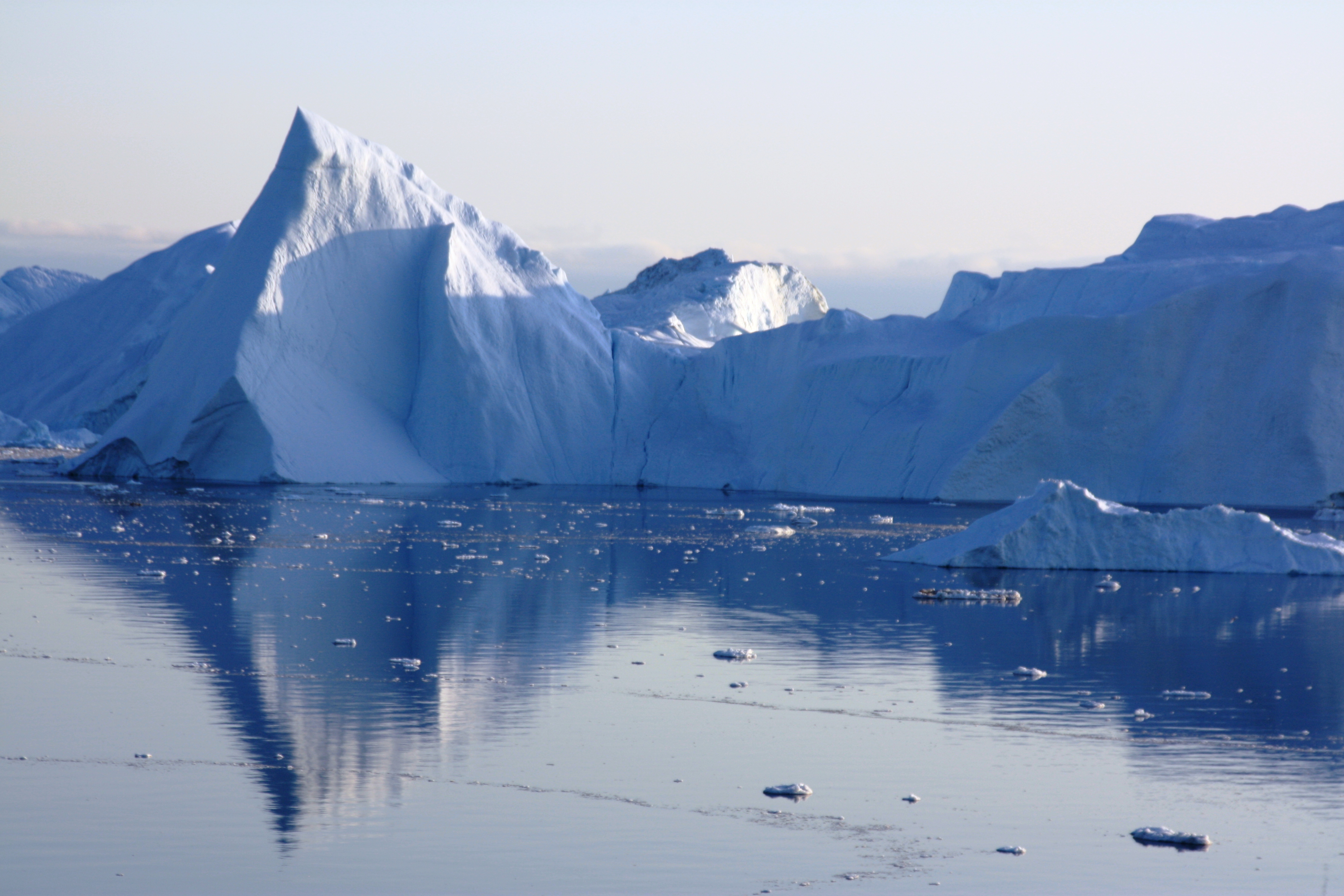




Feedback